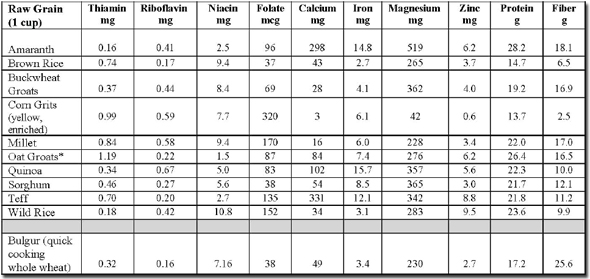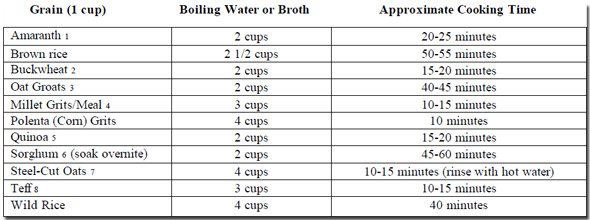Facts About Supplements for Heart Health
August 25, 2009 by CLF
Filed under Blog, Healthy Living
Many people take vitamins and supplements to boost their heart health. Which supplements work best? How much should you take? Here are tips to help you shop wisely.
Supplements for Heart Health
Supplements like omega-3 fatty acids (fish oil) and plant sterols may help lower cholesterol and improve blood flow to the heart.
Coenzyme Q10
Coenzyme Q10 acts like an antioxidant, which helps protect cells from damage. Some studies show that CoQ10 supplements may lower blood pressure slightly and may help heart failure. NutraMetrix offers a great COQ10 product. Click the link on the home page to learn more or to place an order.
Fiber (Psyllium)
Fiber lowers cholesterol, as well as the overall risk of heart disease, according to many studies. Soluble fiber binds with cholesterol in the intestines and prevents it from being absorbed by the body.
Flaxseed Oil
Flaxseed and flaxseed oil may lower cholesterol levels. It’s not yet clear whether it also lowers your overall risk of heart disease.
Folic Acid
Folic Acid and B vitamins lower the amino acid homocysteine, which has been linked to heart disease. But studies have not proven that folic acid reduces the rate of heart attacks and stroke.
Magnesium
Magnesium helps keep blood pressure normal and the heart rhythm steady.
Omega-3 Fatty Acids
Omega-3 fatty acids from fish oil can lower blood pressure and triglycerides, according to research. Omega-3s may also reduce your overall risk of death from heart disease. NutraMetrix offers a highly potent omega-3 product. Click the link on the homepage to learn more or place an order.
Red Yeast Rice
Red yeast rice may lower total cholesterol and “bad” LDL cholesterol, according to several studies. One ingredient in red yeast rice – monacolin K – is identical as the active ingredient in a cholesterol drug.
Information obtained from WebMD.
Finding Hidden Gluten in Your Foods
August 25, 2009 by CLF
Filed under Blog, Gluten-Free Diets/Celiac Disease
Following a gluten-free diet can be challenging at the best of times, and successfully avoiding gluten requires a bit of detective work. It may not be obvious when reading a food label that a particular food contains gluten. Below is a list of the many food ingredients and additives that may contain hidden gluten. If you are gluten intolerant, it is important to verify specific foods to ensure that they do not contain hidden gluten.
Baking Powder
Binders
Blue Cheese
Brown rice syrup
Caramel colorings or flavorings
Cereal fillers, protein or starch
Citric Acid
Coatings
Colorings
Corn Starch
Curry Powder
Dextrins
Dispersing Agents
Emulsifiers
Excipients (in prescription medications, for consistency)
Extracts (in grain alcohol)
Fillers
Flavorings (in grain alcohol)
Flours made from wheat, barley, oats, and rye
Grain alcohol (beer, ale, rye, scotch, bourbon, grain vodka)
Gum base
Homeopathic remedies
Hydrolyzed protein, Hydrolyzed plant protein (HPP), Hydrolyzed vegetable protein (HVP)
Malt or Malt Flavoring (barley malt, malt vinegar)
Maltodextrin
Modified starch, Modified food starch (made from wheat)
Mono- and di-glycerides (made using a wheat starch carrier)
Natural flavorings
Oils (wheat germ oil and others with gluten additives)
Preservatives
Soy sauce (when fermented with wheat)
Spices (if anti-caking agent used)
Starch (modified food starch, edible starch)
Textured vegetable protein (TVP)
Vegetable gum
Vegetable protein or starch
Vinegars (white, or malt)
Vital wheat gluten (common in soy products)
Vitamin E oil
Written by Elizabeth Daeninck, MS, RD
Published in November 2008
(HealthCastle.com)
Energy/Snack Bars
August 25, 2009 by CLF
Filed under Blog, Gluten-Free Diets/Celiac Disease
Comments Off on Energy/Snack Bars
(gluten free list included)
- Cliff Bars and mini Cliff Bars
- Cliff Nectar Bars
- Cliff Z Bars (good for kids)
- Gnu Bars (high fiber)
- Honey Bars
- Kashi TLC Bars (good fiber, moderate protein)
- Keri Bars
- Lara Bars
- Luna Bars
- Odwalla Bars
- Perfect 10 Bars (dried fruit and nuts)
- You Bars (you make them yourself www.youbars.com)
- Zing Bars
Gluten-free Bars: Perfect 10, Elev8Me, Hammer Bar, EnvirKids Rice Cereal Bar; Omega Smart Bars, Extend Bar, Bumble Bar.ReNew Life Organic Energy Bar, Think5 Bar, Allerenergy Bar, GoMarco Bar, some Lara bars-gluten free
Wheat-free but not gluten-free: Clif Nectar, Clif Builder’s Bar, Odwalla Bar.
New Horizons for Whole Grains and the Gluten-Free Diet
August 19, 2009 by CLF
Filed under Blog, Gluten-Free Diets/Celiac Disease
Comments Off on New Horizons for Whole Grains and the Gluten-Free Diet
 © Carol Fenster, PhD, author of Gluten-Free Quick & Easy,
© Carol Fenster, PhD, author of Gluten-Free Quick & Easy,
www.glutenfreequickandeasy.com
© Shelley Case, RD, author of Gluten-Free Diet: A Comprehensive Resource Guide
www.glutenfreediet.ca
The National Institutes of Health (NIH) state that 1:100 or 3 million Americans have celiac disease, an autoimmune disorder where gluten inhibits the absorption of nutrients from food. The only treatment is a strict lifelong, gluten-free diet. People who are allergic or intolerant to gluten must also avoid it. Gluten is the general name for specific proteins found in the grains wheat, spelt, kamut, rye, triticale, and barley.
What are Whole Grains?
Gluten-free grains (also called cereals) are the seeds of plants and include brown rice, corn, flax, Montina™ (Indiana ricegrass), millet, oats (pure, uncontaminated), sorghum, teff, and wild rice––as well as the pseudo-grains of amaranth, buckwheat, and quinoa. A grain is “whole” when it is consumed in a form that includes the bran (outer layer and primary source of fiber), germ (the part that sprouts into a new plant), and endosperm (the bulk of the seed).
The Scoop on Oats
Until recently, oats were not allowed in the gluten-free diet because the protein in oats was thought to trigger the same toxic reaction as wheat and other gluten-containing grains. New research in Europe and the US over the past 14 years has revealed that consumption of moderate amounts of oats is safe for the majority of children and adults with celiac disease. Most of these studies used pure, uncontaminated oats, but it should be noted that a very small number of persons with celiac disease may not even tolerate pure oats. The mechanism causing this intolerance has yet to be established.
Based on this new research, a growing number of celiac organizations and health professionals around the world now allow consumption of moderate amounts of pure, uncontaminated oat products in diet. An extensive technical review on the safety of oats was recently published on Health Canada’s website.
Unfortunately, the majority of commercial oats products on the market are cross-contaminated with wheat, barley, or rye which occurs during harvesting, transporting, storing, milling, processing, and packaging. The good news is that there are companies in the US, Canada, and Europe who produce pure, uncontaminated specialty oat products. The North American companies are Bob’s Red Mill, Cream Hill Estates, FarmPure Foods (Only Oats™), Gifts of Nature, and Gluten-Free Oats.
Health Benefits of Whole Grains in a Gluten-Free Diet
People who regularly eat whole grains have a lower risk of obesity, lower cholesterol levels, and a reduced risk of heart disease, stroke, type 2 diabetes, and cancer. The USDA and the Whole Grains Council recommend 3 to 5 servings of whole grains per day. Look for the yellow Whole Grains Stamp. Eating three whole grain food products labeled “100% Whole Grain”––or six products bearing ANY Whole Grain Stamp–– satisfies the need for 3 to 5 servings per day.
- Add cooked buckwheat, oat groats, steel-cut oats, quinoa, sorghum, or wild rice to rice pilaf
- Enrich soups with cooked brown rice, buckwheat, oat groats, quinoa, sorghum, or wild rice
- Boost nutritional content of brownies, cakes, and cookies with 1/4 cup cooked amaranth or teff
- Sprinkle cooked whole grains over mixed green salads
- Toss cooked whole grains with gluten-free pasta
- Cook whole grains in a slow-cooker overnight for a hearty breakfast (see page 5)
- Dress cold cooked whole grains with pesto or a zesty salad dressing for tabbouleh (see page 4)
- Blend cooked oat groats or brown rice with black beans or pinto beans in Southwestern dishes
- Extend hamburger patties or meat loaf with gluten-free rolled oats or cooked brown rice, quinoa, amaranth, or teff
- Replace 1/4 of the cornmeal with teff grains for a cornmeal-teff polenta
- Add cooked amaranth, quinoa, or teff to puddings for interesting texture
- Cook hot cereal for breakfast from Altiplano Gold quinoa cereals, Ancient Harvest quinoa flakes, Bob’s Red Mill Mighty Tasty GF Hot Cereal, or The Birkett Mills’ buckwheat flakes
- Use quinoa flakes or gluten-free cold cereals and granolas to top fruit crisps
- Choose pasta that is made with added rice bran (e.g., Tinkyada) or with quinoa (e.g. Ancient Harvest, NorQuin)
- Choose baking flours such as amaranth, brown rice, buckwheat, Montina™, quinoa, sorghum, teff, or wild rice because they are ground from the whole grain
- Sprinkle ground flax or flax meal on yogurt or hot cereal
- Add cream of buckwheat cereal, ground flax or flax meal , or rice bran to homemade breads
- Enjoy popcorn as a nutritious snack
- Choose whole grain crackers such as Mary’s Gone Crackers
Nutrient Composition of Gluten-Free Whole Grains Compared to Whole Grain Wheat

* choose pure, uncontaminated oat groats
Nutrient composition data from:
1. Gluten-Free Diet: A Comprehensive Resource Guide –Revised and Expanded Edition, 2008 by
Shelley Case, RD. www.glutenfreediet.ca (Amaranth, brown rice, buckwheat, millet, quinoa, sorghum, teff
and wild rice)
2. USDA National Nutrient Database for Standard Reference at www.nal.usda.gov/fnic/foodcomp/search/
(Corn grits, oat groats, and bulgur)
How to Cook Whole Grains
From 1000 Gluten-Free Recipes by Carol Fenster, PhD (Wiley, 2008)
(Cooking times may vary by altitude and manufacturer. Season to taste with salt, pepper, or your favorite herbs and spices.)

These whole grains are available at health food stores or online from various specialty companies such as:
- www.nuworldamaranth
- www.bobsredmill.com, www.thebirkettmills.com
- www.bobsredmill.com, www.creamhillestates.com, www.onlyoats.com
- www.bobsredmill.com
- www.bobsredmill.com, www.quinoa.com, www.quinoa.net
- www.twinvalleymills.com
- www.bobsredmill.com, www.creamhillestates.com, www.onlyoats.com
- www.bobsredmill.com, www.teffco.com
Quinoa Tabbouleh
(Adapted from 1000 Gluten-Free Recipes by Carol Fenster, PhD, Wiley, 2008)
Most of the quinoa we buy today has already been rinsed to rid it of the bitter saponin coating, particularly if it is from www.quinoa.com, www.quinoa.net or imported through Inca Organics. If you’re not sure about the source, rinse it in a sieve until the water runs clear. Saponin, a natural coating that wards off birds and insects, won’t hurt humans but the quinoa tastes better without it.
To cook quinoa
1 teaspoon canola oil
1 cup uncooked quinoa, rinsed twice
1/2 teaspoon table salt
1 can (14.5 ounces) or 1 3/4 cups gluten-free, low-sodium chicken broth, Swanson’s Natural Goodness
3/4 cup water
Tabbouleh
1/4 cup shelled raw pumpkin seeds
1 English (hothouse) cucumber, unpeeled and finely diced
3 green onions, thinly sliced
1 small red bell pepper, cored, seeded, and finely diced
1 small yellow bell pepper, cored, seeded, and finely diced
1/2 cup chopped fresh parsley
1/2 cup chopped fresh cilantro
1/4 cup chopped fresh mint
1/4 cup crumbled feta cheese (optional)
Dressing and Garnish
3 tablespoons fresh lemon juice
2 tablespoons extra-virgin olive oil
1 tablespoon white wine vinegar or rice vinegar
1/4 teaspoon table salt
1/8 teaspoon white pepper
Fresh mint or parsley sprigs for garnish
1. Heat the oil in a medium saucepan over medium heat and toast the quinoa about 4 minutes, shaking the skillet occasionally, until the seeds are light golden brown.
2. Add the chicken broth and water, reduce the heat to low, and cook 15 to 20 minutes, covered, or until the quinoa is tender. Remove from heat and cool 10 minutes. Drain the quinoa well.
3. Combine the cooked quinoa and remaining tabbouleh ingredients except feta cheese in a large serving bowl.
4. Combine the dressing ingredients (except fresh mint or parsley) in screw-top jar and shake vigorously to blend. Pour over quinoa mixture and toss until all the ingredients are thoroughly coated. Cover the bowl and refrigerate 4 hours. Let stand at room temperature 20 minutes before serving. Toss with the feta cheese just before serving. Garnish with fresh mint or parsley. Serves 6.
Shelley Case’s High-Fiber Hot Cereal
(From Gluten-Free Diet: A Comprehensive Resource Guide by Shelley Case, RD, Case Nutrition Consulting Inc., Revised and Expanded Edition, 2008)
This quick, heart-healthy breakfast is packed with fiber and omega-3 fatty acids. Add a spoonful of
brown sugar, chopped nuts and/or dried apricots or raisins for more flavor and extra nutrients
3 tablespoons flax seed meal (ground flax)*
3 tablespoons Cream of Brown Rice Hot Cereal
1 1/3 cups water
Dash of vanilla
1. Combine the first 3 ingredients in a medium-to-large glass bowl.
2. Cook on high in a microwave for 3 to 4 minutes, or until thick and creamy. Stir in vanilla. Serve with brown sugar, nuts and/or dried fruits
* As flax is very high in fiber, it is important to gradually introduce it in small portions until tolerated. Start with 5 tablespoons hot cereal and 1 to 3 teaspoons of ground flax initially and then gradually work up to 3 tbsp. flax and 3 tbsp. hot cereal.
Variations:
Substitute Creamy Buckwheat Hot Cereal or Bob’s Red Mill Mighty Tasty Gluten-Free Hot Cereal™ for the Brown Rice Hot Cereal.
Nutritional Analysis: 1 serving = 1 cup

Slow Cooker Whole Grain Porridge
(from Gluten-Free Quick & Easy by Carol Fenster, PhD, (Avery, 2007)
Cooked whole grains are an excellent way to start the day, but if you don’t have time in the morning to cook whole grains on the stovetop, use your slow cooker to make porridge overnight. Coat the liner with cooking spray, use a ratio of 1 cup grain to 3 1/2 to 4 cups water or broth, and
cook on Low overnight for 8 to 12 hours. Serve with dried fruit, nuts, and honey, cinnamon, maple syrup, and agave nectar or your favorite sweetener.
Providers of Gluten-Free Whole Grains
www.altiplanogold.com
www.amazinggrains.com
www.arrowheadmills.com
www.bobsredmill.com
www.thebirkettmills.com
www.creamhillestates.com
www.giftsofnature.net
www.glutenfree.com
www.glutenfreemall.com
www.glutenfreeoats.com
www.glutensolutions.com
www.lundberg.com
www.onlyoats.com
www.quinoa.com
www.quinoa.net
www.nuworldamaranth.com
www.teffco.com
www.twinvalleymills.com
For More Information about Using Whole Grains in the Gluten-Free Diet
1000 Gluten-Free Recipes by Carol Fenster, PhD (Wiley 2008)
Gluten-Free Quick & Easy by Carol Fenster, PhD (Avery, 2007)
The Wheat-Free Cook by Jacqueline Mallorca (William Morrow, 2007)
Complete Gluten-Free Cookbook by Donna Washburn and Heather Butt (Robert Rose, 2007)
Gluten-Free Diet: A Comprehensive Resource Guide by Shelley Case, RD (Case Nutrition Consulting Inc., Revised and Expanded Edition, 2008)
Gluten-Free 101 by Carol Fenster, PhD (Savory Palate, 2006)
Cooking Free by Carol Fenster, PhD (Avery, Penguin Group, 2005)
Best Gluten-Free Family Cookbook by Donna Washburn and Heather Butt (Robert Rose, 2005)
Wheat-Free Recipes & Menus by Carol Fenster, PhD (Avery, Penguin Group, 2004)
Food Allergy Survival Guide by Vesanto Melina, MS, RD, Jo Stepaniak, MSEd, Dina Aronson, MS, RD
(Healthy Living Publications, 2004)
Gluten-Free Friends by Nancy Patin Falini, RD (Savory Palate, 2003) -for kids
For More Information on Whole Grains
www.wholegrainscouncil.org
www.mypyramid.gov
www.healthierus.gov/dietaryguidelines

